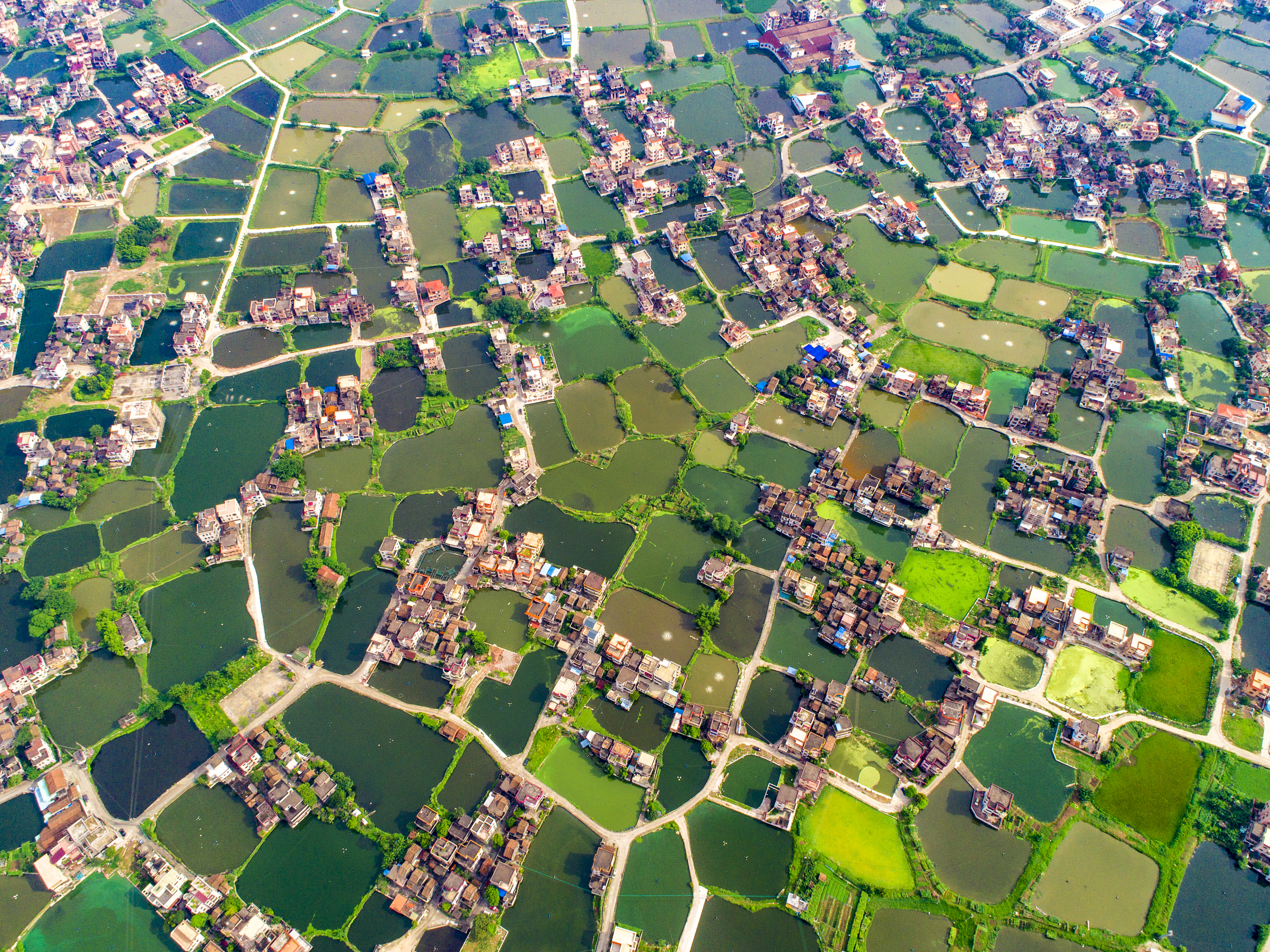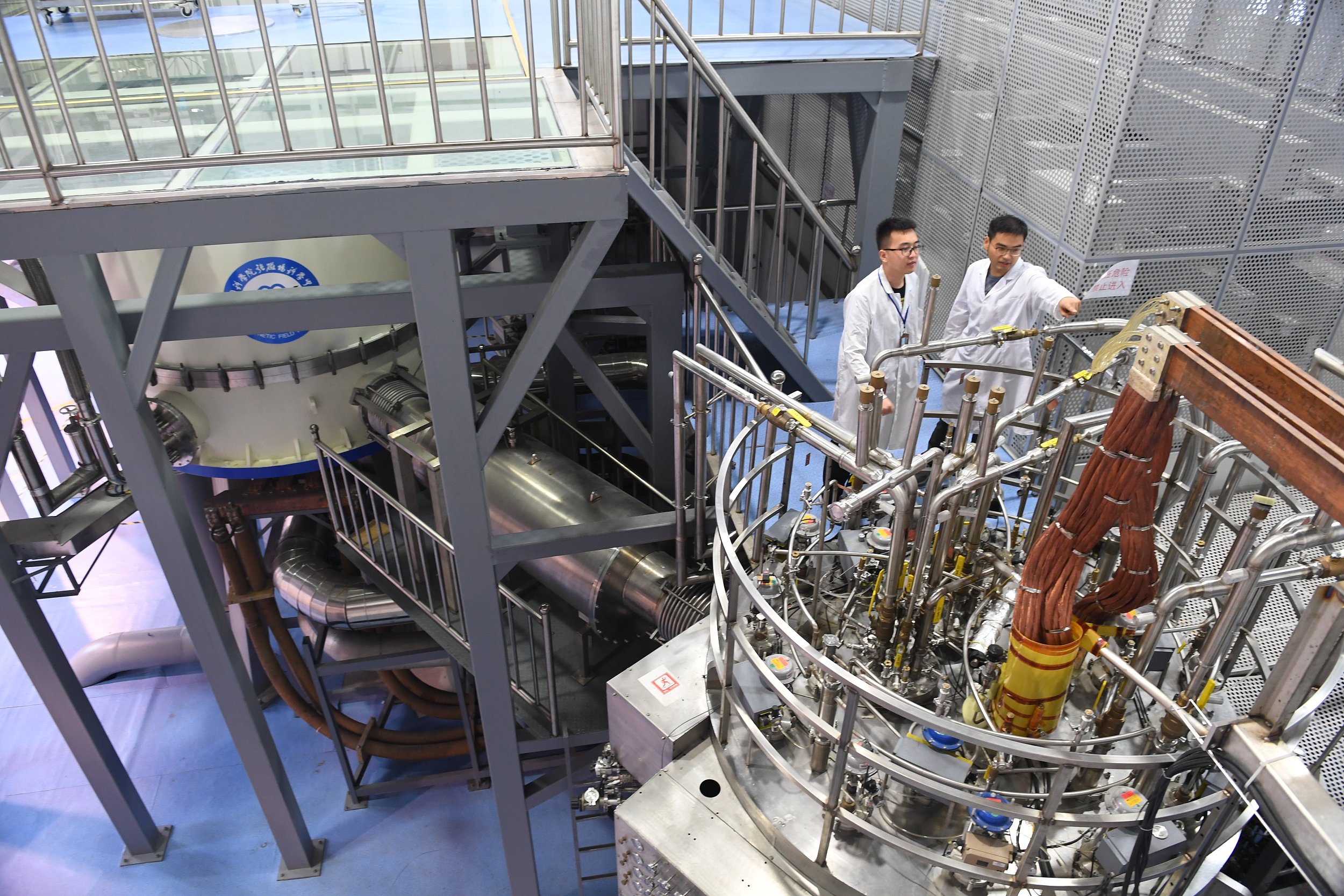Historical Water Conservancy Project in the Pearl River Delta

An aerial view of mulberry-based fish ponds of Sangyuanwei Polder Embankment System in Foshan, Guangdong province. (PHOTO: VCG)
By BI Weizi
The Sangyuanwei Polder Embankment System, built during the Song Dynasty (960-1127) in the Pearl River Delta in Foshan, Guangdong province, is one of the largest polder embankment projects of ancient China, extending for 64.84 km and covering an area of 265.4 km2.
Located in a subtropical marine monsoon climate zone, with an average annual precipitation of 1,620 mm and surrounded by the mainstream of the Pearl River and the Beijiang River, Sangyuanwei is highly susceptible to floods and typhoons, which motivated local people to build a project that allowed them to live in harmony with nature.
Sangyuanwei is mainly composed of three parts: embankment, irrigation and drainage system, and water control work. The system's dike is crisscrossed with rivers, forming a complete network of irrigation and drainage channels. Water control work of Sanyuanwei is called "dou", which is actually a sluice gate that can control water diversion, drainage and transmission depending on the actual water level. The water system within the embankment is connected with the outside water through the gates on the embankments. At present, there are 63 ancient gates with historical value.
With a history of almost 1,000 years, Sangyuanwei is not only an important historical witness to local water conservancy and cultural development, but also to the historical process of migration of population and expansion of economic zones to southern China since then. In December 2020, it was successfully included in the seventh batch of the World Heritage Irrigation Structures List by the International Commission on Irrigation and Drainage.


